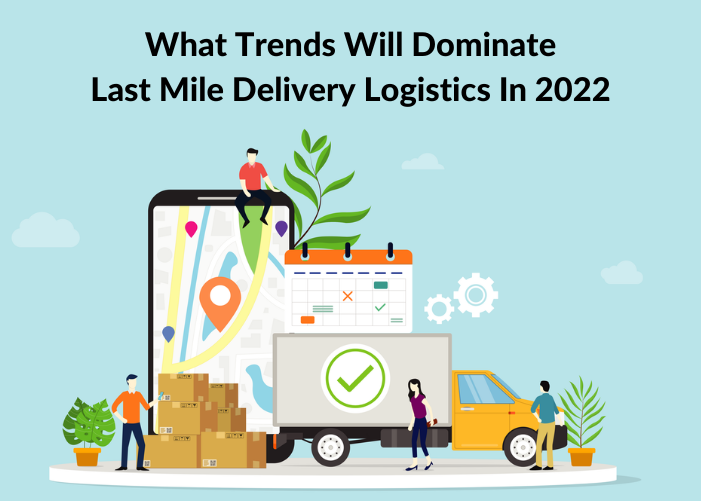Summary
With increasing global competition and price wars, today’s companies are in a frenetic battle to win customers. What’s more, retaining a customer is more difficult than it has ever been.
With a plethora of products and services available and new micro-segments being created every day, the consumer is spoilt for choice. This has meant that logistics and distribution firms need to pay foremost attention to the entire customer experience of buying and receiving products. Here is where a satisfactory delivery experience—and therefore, last mile delivery logistics—has become critical to success.
Clients and logistics firms must stay ahead of the curve and constantly look to take advantage of the new and upcoming trends in last-mile delivery to be better than their competition.
I. Top 8 trends impacting last-mile delivery in 2022
1. Rapid adoption of Quick Commerce: Well, we live in the era of speed, technology, and instant gratification! Not long ago, Amazon’s 24-hr delivery and Same-day delivery were considered great new benefits. However, with the rate of obsolescence quickening every day, we now have the advent of Quick Commerce, which has caused significant disruption in the on-demand space.
~ 85% of customers are unlikely to place a repeat order after an unsatisfactory delivery experience ~
In particular, industries like grocery, pharmaceuticals, and e-commerce are adapting to Quick Commerce. By using technological improvements available, companies and brands are replacing traditional business models and distribution channels with digital platforms to improve their delivery services. Typically, this space is characterized by delivery times of less than 20 minutes. The size of the orders, both value, and weight tend to be small(er) and easily transported via two-wheelers, drones, or small vehicles.
The Quick Commerce model has helped firms to take advantage of various modes of delivery, such as “instant”, and “on-demand”. Importantly, this model has created a focus on using micro-warehousing, modern technology tools (e.g. last-mile software with its automated route-optimization techniques, and deep data analytics), and clear and transparent SLAs so that such short delivery times can be maintained.
70% of customers consider delivery flexibility while making a purchase decision. Same-day deliveries and on-demand deliveries will become a major portion of last-mile delivery
2. “Go-Green” is becoming increasingly important: Fuelled by increasing awareness about our rapidly deteriorating environment as well as the Millennial Generation’s growing up as strong advocates of sustainability, the logistics and distribution firms have also realized its importance. With fuel consumption in vehicles being a major source of greenhouse gas emissions, the objective is to achieve carbon neutrality. Firms nowadays are trying to use environment-friendly processes by shifting to e-vehicles and using the recycled packing material.
Also, since not all items need to be delivered “on-demand” – and, especially since the fastest delivery options are often the most carbon-unfriendly! – logistics providers, as well as customers, are realizing that those items need not be ordered for immediate delivery.
3. Increasing importance of 3PL: Well, the 3PL has already grown to become a critical stakeholder in the supply chain network. With the growing need for resource-backed fulfillment services – such as the need for improved delivery management software, acute logistics optimization increased usage of smaller warehouses in urban areas – the dependence on 3PLs will only go north.
With vast capabilities across critical logistics functions and services like route-optimization, fleet and driver management, timely deliveries, monitoring driver/rider performance (etc.), client companies must select a strong 3PL fulfillment partner.
4. Use of driverless vehicles and drones: With delivery volumes rising all over the world, especially due to the rapid growth of eCommerce, supply firms are looking at innovative, economical, and effective ways to approach last-mile delivery. This has led to investments and experiments with cutting-edge technology such as driverless cars, delivery bots, and drones. Amazon’s Aurora (self-driving technology) is a prime example.
5. Focus on Customer Experience: As always, the only metric for a successful business is whether you are creating happy customers. With e-commerce firms and modern retailers falling over themselves to offer discounts and deals, their delivery times have become an important tool for customers. Using modern automated delivery management software, supply firms can meet their customers’ delivery expectations.
6) Contactless delivery: Fuelled by the pandemic over the last two years, the incidence of contactless delivery is now almost the new normal. Last-mile delivery companies have stepped up and automated entire delivery cycles by using ePOD and digital payments to minimize contact so as to ensure safety for delivery teams and customers.
7) Urban warehouses: As already mentioned, the speed of delivery is an essential factor in consumer consideration while making a purchasing decision. Services like 20-minute deliveries or same-day deliveries cannot be achieved unless e-commerce firms start using warehouses and fulfillment centers closer to the city to get quick access to products to complete their deliveries. This reduces delivery times and helps in maintaining stable delivery teams and warehouse workers.
An interesting development is the use of retail stores as micro-fulfillment centers – since lesser people visit brick-n-mortar stores these days, this has become possible.
8) Location intelligence: Technologies like location intelligence (LI) are increasingly being used by logistics firms for their last-mile delivery. This provides the customer with visibility and keeps them updated about the exact location of their parcels while in transit.
II. Last-mile delivery system: The Center of it all
As is clearly visible from the points above, the success of current logistics and delivery operations is purely dependent on the extent of modern technology that you use.
The tech-enabled last mile delivery management software that is available today is, therefore, a tool without which logistics firms cannot hope to survive.
All the trends indicated above have one thing in common: they can function only with the help of solid and robust technology. Whether it is route-optimization using micro-warehouses, drones for medicine, or the contactless deliveries of today, it is the delivery and logistics software system that is the star performer here! Without it, you are stuck.
Conclusion: Smart platforms like last mile delivery software are primed for managing all logistics and upcoming trends related to last-mile delivery. Be sure to get a good one!




